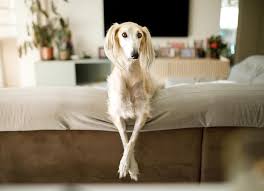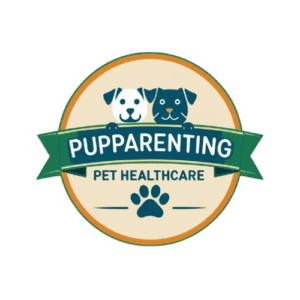I remember when my once active pet started to look a little plump and pudgy, and I thought it was kind of cute at first. Many people and humans are naturally drawn to chubby dogs, seeing it as a sign of love or good care. But as dogs grow up, the health effects of being overweight can be far from harmless. The dangers of weight gain are real — from joint strain to serious heart problems. Over the years, I’ve learned that there are many causes behind a dog’s weight gain, and while it’s common, it’s never something to ignore. Taking time to talk to your vet can make all the difference, especially when it comes to protecting your pet’s long-term health. Even though chubby dogs might seem adorable, keeping them at a healthy weight is one of the kindest things you can do for them.

Weight Gain in Dogs: Common Causes and Treatments
Over the years, I’ve seen many dogs become overweight or even obese without their owners realizing it. These pets often seem just a bit heavy, but this extra weight can put them at serious risk of arthritis, heart disease, and even shorten their life expectancy. Obesity is often associated with many problems such as tumors, blood pressure issues, and chronic illness. One of the most common reasons for weight gain is consuming more calories than are burned. When calories consumed regularly exceed the energy the pet uses, the result is slow but steady gain. Many people tend to overestimate how much food their dogs actually need, especially as they age and become less active.
I always remind owners to talk to their vet when they notice a sudden change in their dog’s physique. Older dogs, for instance, have different energy needs, and feeding them the same quantity as before can lead to an imbalance. For small breeds, calorie requirements might be as low as 185 to 370 a day, while bigger ones weighing between 1,100 and 1,700 pounds (in proportion to size) may need more to maintain a healthy body. Each breed, age, and size plays a part in determining what’s ideal. I once watched a video showing how to brush your dog’s teeth, which reminded me that even simple routines matter to overall health and well-being — not just diet and exercise.
When dogs aren’t getting enough exercise, their bodies fail to burn extra energy. Aim for 20 to 60 minutes of activity each day, but be careful not to push too hard. If your pets haven’t been active lately, don’t suddenly take them on a three-mile run. Start slowly, follow your vet’s tips, and build a workout plan that helps them thrive. Sometimes, chronic conditions like Cushing’s disease (hyperadrenocorticism) or hypothyroidism are behind the issue. These occur when adrenal glands release too much cortisol, causing stress, infection, and high blood sugar levels. Symptoms may include excessive hunger, thirst, urination, panting, a pot-bellied appearance, or hair loss. These can be treated with adrenal-suppressing drugs, surgery, or hormone replacement therapy. Certain breeds like Doberman pinschers and golden retrievers are more prone to an underactive thyroid, showing lethargy, weakness, or decreased appetite — all signs that it’s time to get your pet checked by a vet and adjust their care plan accordingly.
Other Causes of Weight Gain in Dogs
From my experience, genetics often play a big role in a dog’s tendency to gain weight, even when owners are careful with diet and activity. Certain breeds are naturally more prone to becoming obese, such as American cocker spaniels, basset hounds, beagles, Cairn terriers, Cavalier King Charles, dachshunds, Labrador retrievers, Norwegian elkhounds, rough collies, and Shetland sheepdogs. These dogs may struggle to burn calories efficiently, and I’ve seen many of them put on extra fat despite moderate feeding. In some cases, fluid buildup caused by heart disease or liver disease can also trigger weight gain, giving the dog a swollen or abdominal appearance that owners might mistake for simple chubbiness.
Additionally, spayed or castrated dogs are more likely to become obese because neutering affects energy expenditure and metabolism. After surgery, a dog’s energy levels may drop slightly, which means fewer calories are burned throughout the day. Without proper portion adjustments, this reduced expenditure can lead to slow and steady weight gain over time. Understanding these physical and biological changes is essential for helping dogs maintain balance and stay healthy.
How to Tell if Your Dog Is Overweight
When I check a pet for a healthy weight, I always start with a simple view from the side—a fit pooch should have a visible waist and a belly that gently tucks up toward the hind legs. You should be able to feel the ribs without pressing too hard on the sides. To weigh your dog accurately, you can visit your vet’s office and use a walk-on scale, or do it at home if your dog isn’t too big. The easiest way is to weigh yourself, note the number, then pick up your dog, step back on the scale, record the combined weight, and subtract your own weight. This gives you your dog’s exact body condition, helping your vet determine if your dog is overweight or showing early signs of obesity.
When to See a Vet
If you ever feel concern about your pet’s weight, it’s best to consult your vet early. A professional can diagnose the cause of the gain and help you create a realistic and safe loss plan that truly works. In my experience, avoiding crash diets is important because they can be bad for your dog’s health. Weight takes time to put on, so it also takes time to reduce it safely. Your vet can figure out the most effective way to manage your dog’s body changes and guide you through every step of the process with care and balance.
Why has my dog suddenly gained weight?
Many dogs experience a sudden weight gain that can worry their owners, especially when they seem to be eating and acting the same. There are several common reasons behind this change, and understanding them helps prevent your pet from becoming obese. One of the biggest causes is over-eating, often because of sneaky extra treats or table scraps that add up over time. Sometimes, subtle changes in diet—like switching to high-calorie food or feeding slightly larger portions—can also contribute. Another major factor is a lack of exercise, especially in older dogs or those who spend most of their day indoors. However, hormones can play a role too. Certain medical problems like Cushing’s disease or polycystic ovary syndrome (though rare in dogs) can cause unexpected weight increases. From my own experience as a pet owner, I’ve seen how even small lifestyle adjustments—like adding a short daily walk or monitoring meal portions—can make a big difference in preventing unhealthy gain.
When should I be worried about my dog’s weight?
As a caring pet owner, you should be concerned about your dog’s weight when you notice it drifting away from its ideal body weight, which can vary depending on your dog’s breed, age, and body type. According to the Association for Pet Obesity Prevention, pets that are 10–20% above their ideal weight are considered overweight, while those 21% or more are classified as obese. It’s important to remember that “ideal” is relative, and what’s healthy for one dog may not be right for another. From my own experience, subtle changes—like feeling more fat over the ribs or difficulty finding your dog’s waistline—can signal early obesity. Keeping track of these signs and consulting your vet can help with prevention before extra pounds affect your pet’s health.
What disease makes dogs gain weight?
Just like humans, dogs can experience weight gain due to a range of reasons, from diet changes and lack of exercise to underlying medical conditions like hypothyroidism or Cushing’s disease.
How do I stop my dog from gaining weight?
Plump Pup Problems: 7 Tips For Preventing Dog Obesity
- Know Their Ideal Weight and Monitor. …
- Choose the Right Dog Food. …
- Don’t Overfeed. …
- Avoid Table Scraps. …
- Give Them Plenty of Exercise. …
- Consider Interactive Feeding Toys. …
- Remember That Not All Treats Are Created Equal.
What is the quickest way for a dog to lose weight?
How to help a dog lose weight
- Feed your dog the correct amount of food. Be sure to feed your dog the correct amount of food each day. …
- Stop feeding your dog treats. …
- Take longer walks. …
- Feed your dog a low-fat diet. …
- Move their food bowl. …
- Use puzzle feeders. …
- Find other ways to exercise. …
- Offer non-food rewards.
